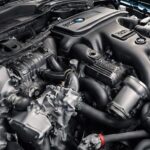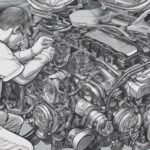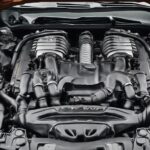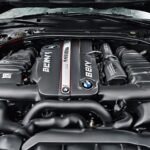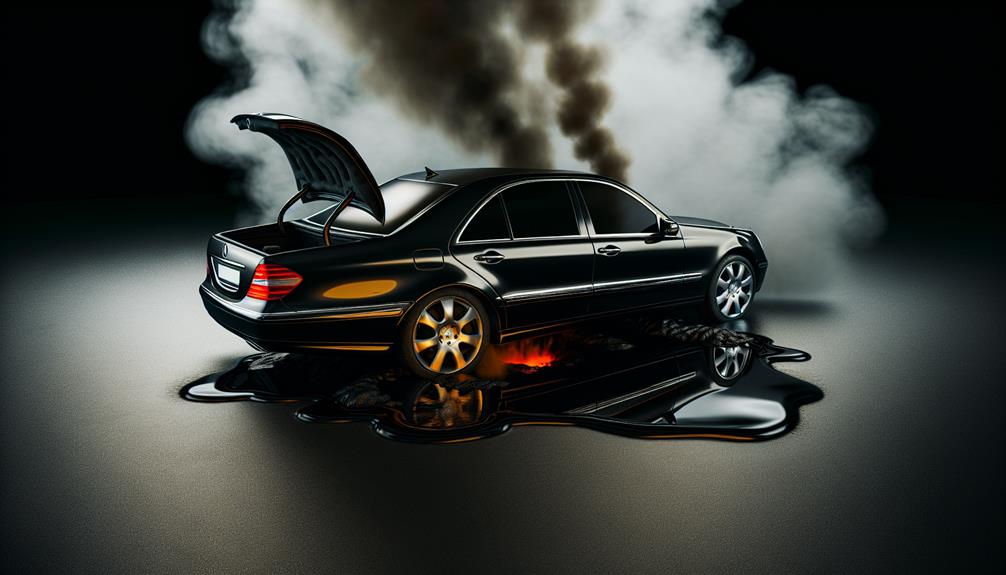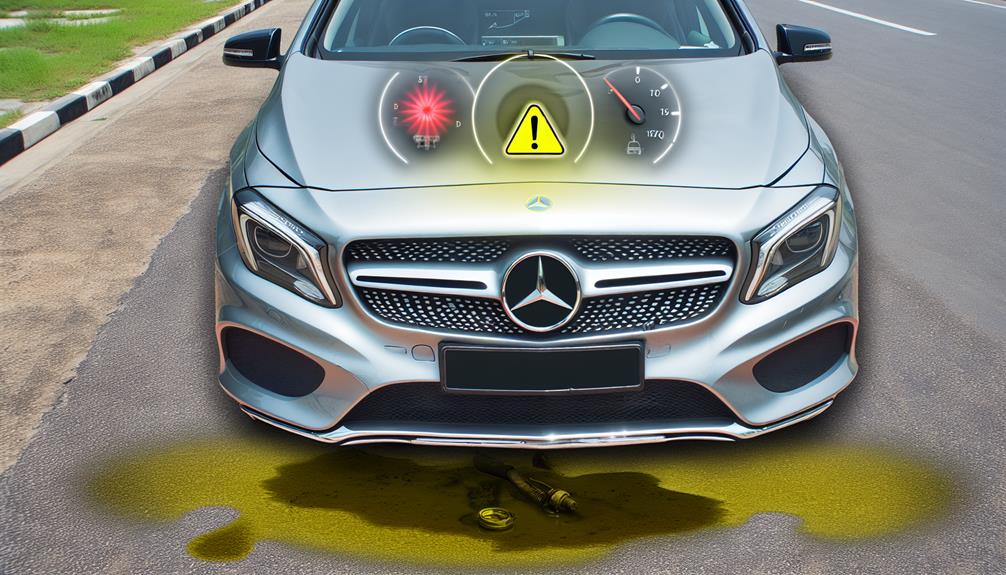If you own a Mercedes E220, watch out for engine mount failures causing unusual vibrations, igniting ignition misfires and worn-out spark plugs, oil and differential leaks causing maintenance headaches, air suspension glitches affecting ride quality, and transmission woes involving the 13-pin connector and valve body. Early maintenance can save you from a bumpy ride ahead.
Key Takeaways
- Engine mount failures can cause unusual vibrations
- Worn ignition components lead to misfires and vibrations
- Oil and differential leaks are common maintenance challenges
- Air suspension failures affect ride quality if neglected
- Promptly addressing transmission issues prevents costly repairs
Engine Mount Failures
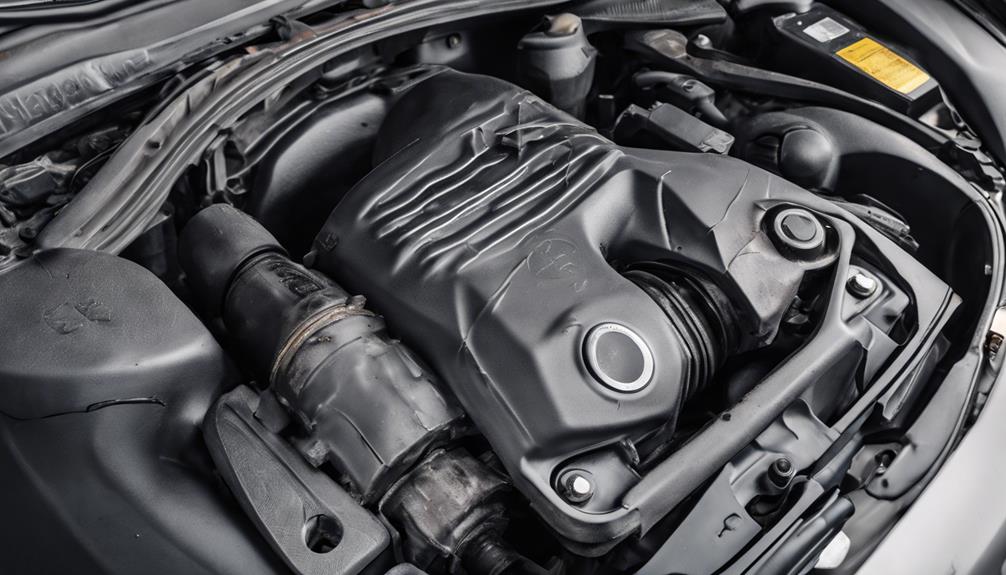
If you ever find yourself experiencing unusual vibrations while driving your Mercedes E220, there's a high chance that your engine mounts could be the culprit.
Engine mounts in Mercedes-Benz E220 models play an essential role in securing the engine to the chassis using a mix of metal and rubber components. These mounts are designed to absorb engine vibrations and maintain stability, but when they fail, it's a whole different story.
Imagine this: you're cruising down the road, and suddenly your car feels like a shaky maraca. That's the result of engine mount failure, a common issue in newer Mercedes-Benz models, including the E220. These failing mounts can cause significant vibrations throughout the vehicle, disrupting your driving comfort and performance.
To avoid this vehicular earthquake, make sure to schedule regular maintenance and inspections to catch any issues early on. Your Mercedes E220 will thank you for the smoother rides ahead!
Engine Misfires and Vibrations
Experiencing unexpected vibrations and engine misfires in your Mercedes E220 can be indicative of underlying issues that demand prompt attention. These symptoms often point towards worn-out ignition components such as coils and spark plugs, which should ideally be replaced every 100,000 miles to maintain peak performance. When ignition components are neglected, engine misfires can occur, leading to noticeable vibrations in the cabin. Apart from causing discomfort, ignoring these signs can result in decreased fuel efficiency and potential long-term damage to your Mercedes E220's engine.
To guarantee your Mercedes E220 runs smoothly, it's vital to prioritize regular maintenance and timely replacement of ignition components. By staying proactive and addressing engine misfires promptly, you can't only enhance fuel efficiency but also extend the lifespan of your vehicle. Remember, a well-maintained car not only performs better but also provides you with a more enjoyable driving experience.
Oil and Differential Leaks

Unexpected oil and differential leaks in your Mercedes E220 can be a real headache, potentially leading to significant maintenance challenges if left unattended. These leaks are like the sneaky gremlins of the automotive world, causing trouble when you least expect it. In the case of the E220, electronic transmissions are prone to graphite buildup, which can result in pesky oil leaks that have the potential to cause severe issues if not taken care of promptly.
Moreover, high-mileage E220 series often experience differential leaks due to deteriorated seals or covers. Dealing with these leaks can pose some maintenance challenges, but staying on top of regular inspections and maintenance can help prevent further complications down the road.
Air Suspension Failures
Discovering air suspension failures in your Mercedes-Benz E220 can be a bumpy ride, causing concern for both your comfort and safety on the road. The air suspension system plays an important role in providing a smooth ride quality, but when it fails, it can lead to a host of issues. Here are three things you should know about air suspension failures in your E220:
- Ride Quality Takes a Hit: A malfunctioning air suspension can result in a rough and uncomfortable driving experience, making every bump and pothole feel like a mountain to conquer.
- Costly Repairs Await: Addressing air suspension failures promptly is essential, as neglecting the issue can lead to expensive repairs down the road, putting a dent in your wallet and your mood.
- Regular Maintenance Is Key: To avoid these headaches, staying on top of air suspension maintenance is vital. Scheduled check-ups can help catch potential problems early, ensuring your E220 stays cruising smoothly. Remember, a well-maintained air suspension system is a happy suspension system!
Transmission Issues
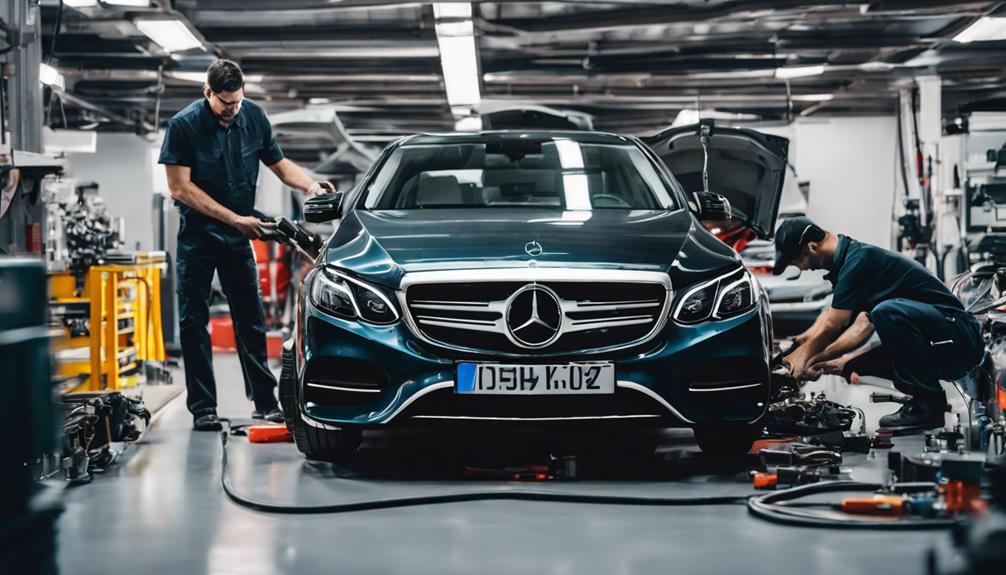
When encountering transmission problems in your Mercedes E220, addressing potential issues promptly can prevent expensive repairs and ensure smooth driving experiences.
Transmission issues in the E220 often revolve around the 13-pin connector and valve body. Keep an eye out for fluid leaks from the 13-pin connector or poor shifting from the valve body, as these are common symptoms of underlying problems.
The 5-speed transmission in Mercedes-Benz vehicles, including the E220, is notorious for these issues. Failure of the 13-pin connector or valve body can result in significant damage to the transmission, so regular maintenance and early detection are vital.
Frequently Asked Questions
What Year Mercedes E-Class Is the Most Reliable?
For the most dependable Mercedes E-Class, the 2013 model shines brightest. With excellent ratings for durability and performance, owners have fewer headaches. This year's E-Class is a solid choice, offering longevity and strong resale value.
Does a Mercedes E220 Have a Timing Belt or Chain?
You're in luck with your Mercedes E220! It's equipped with a reliable timing chain that's built to last the engine's lifetime. No need for constant replacements or maintenance like timing belts. Just enjoy the ride!
How Reliable Are E-Class Mercedes?
E-Class Mercedes are renowned for their reliability, offering a blend of durability and performance. With advanced safety features and a smooth driving experience, they make a dependable choice. Regular maintenance enhances their longevity.
What Is the Life Expectancy of a Mercedes E-Class?
You can expect a Mercedes E-Class to have a long life with proper care. Regular maintenance and timely repairs can help it reach well over 200,000 miles. Driving habits, service history, and environmental factors play a role.
Conclusion
So there you have it, the common problems that may arise with your Mercedes E220. From engine mount failures to transmission issues, these issues can be a pain in the rear end.
But fear not, with proper maintenance and care, you can keep your E220 running smoothly and avoid these headaches.
So keep an eye out for these issues, and remember, a little TLC goes a long way in keeping your Mercedes purring like a well-oiled machine.

